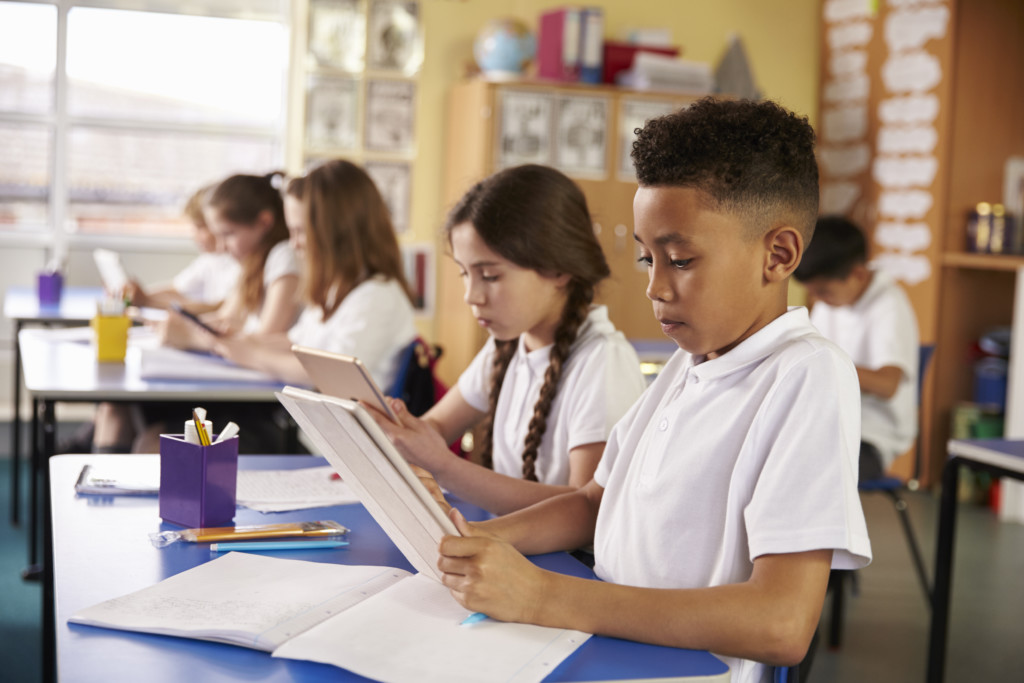 Editor’s note: Like many education policy experts, redefinED guest blogger Dan Lips closely monitored recent results of the National Assessment of Education Progress (NAEP), particularly the fact that four in 10 lower-income eighth-graders scored “below basic” in reading. Lips concurs with others that these disappointing results indicate the nation has failed to achieve its longstanding goal of promoting equal opportunity in K-12 education.
Editor’s note: Like many education policy experts, redefinED guest blogger Dan Lips closely monitored recent results of the National Assessment of Education Progress (NAEP), particularly the fact that four in 10 lower-income eighth-graders scored “below basic” in reading. Lips concurs with others that these disappointing results indicate the nation has failed to achieve its longstanding goal of promoting equal opportunity in K-12 education.
In a new report for the Foundation for Research on Equal Opportunity, I reviewed the state of equal opportunity and identified key trends after studying a half-century of federal education policy. (FREOPP’s research mission is to understand the “impact of public policies and proposed reforms on those with incomes or wealth below the U.S. median.”)
In one key respect, national policymakers have been clear. While federal funding remains a small fraction of total education spending, the national policy of the United States is to promote the equal opportunity for all children to access a high-quality education.
Decades of federal reforms and funding have focused on assisting children at risk of being denied equal opportunity to a good education. Children from low-income families, children with disabilities, American Indian and Alaska Native children, migrant children, bilingual children, and English language learners, foster children, the homeless, and others have been the focus of various federal initiatives.
In some respects, the United States has narrowed inequality in K-12 public education for poor and non-poor children, at least in terms of key school inputs. Average per-student revenues in high-poverty school districts are only $500 (or 3.5 percent) less than the average at low-poverty schools districts, according to the U.S. Department of Education. While equity in school funding differs by state and locality, the U.S. has made progress ensuring that differences in school funding and other resources do not exacerbate inequality.
Moreover, the United States spends more per-pupil than most developed countries, or about 25 percent higher than the average spent by Organization for Economic Development and Cooperation (OECD) countries.
In all, the average low-income child who finished high school in 2019 will have had more than $146,000 invested in her prekindergarten and K-12 education, according to a conservative estimate of national per-child education spending from 2002 to 2019 that I calculated.
Yet achievement gaps between rich and poor students persist. And national outcome measures, like the NAEP test, show that many low-income children do not master basic skills.
Of course, many factors affect students’ educational experiences, including family background and corresponding life experiences. Significant education opportunity gaps also persist within American education, including whether students have the opportunity to attend a school of their parents’ choice or be taught by an effect teacher. Important educational and opportunity gaps also exist in students’ educational experiences outside of school, including large differences in the resources available for enrichment.
Readers of redefineED are rightly focused on identifying solutions in education, rather than simply diagnosing the problem. Reviewing the state of equal opportunity in American K-12 education shows the traditional approach to establishing fairness in American K-12 education — working to create a uniform, high-quality public-school system — has been unsuccessful.
Reforming American K-12 education to establish equal opportunity is a project that involves more than 132,000 schools, 3 million schoolteachers, 3 million school employees, and — most importantly — 50 million children and their families. Such a large and complex challenge requires prudence, humility and recognizing that there are few simple answers.
Nevertheless, in a key respect there is broad, bipartisan agreement: All children deserve the opportunity to access a high-quality education. History suggests new approaches and policy reforms must be considered to make progress toward achieving the national goal.


